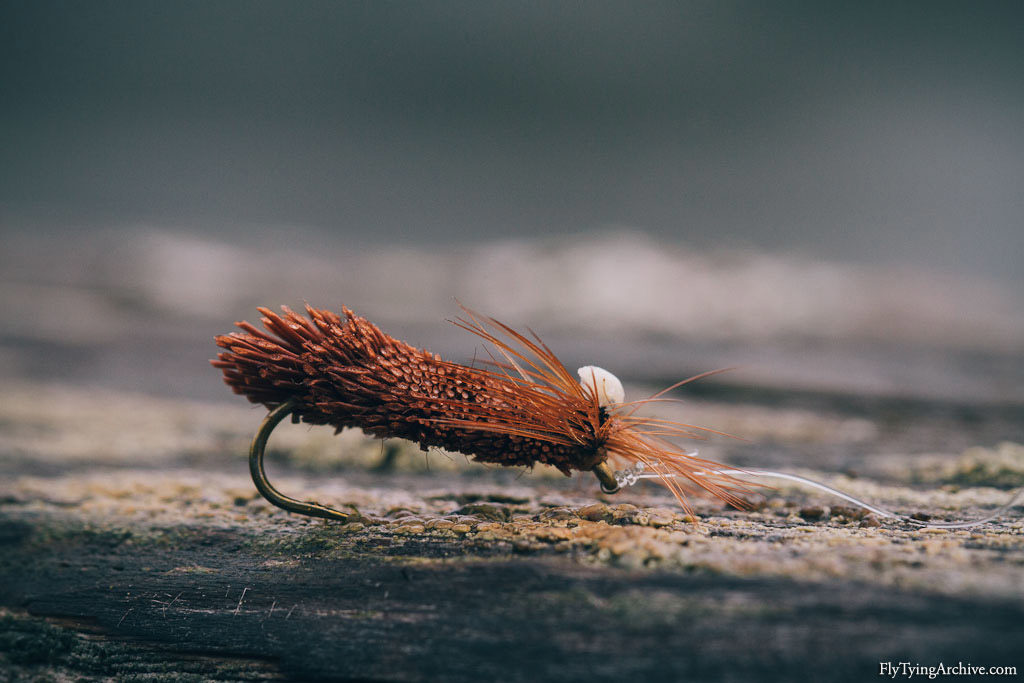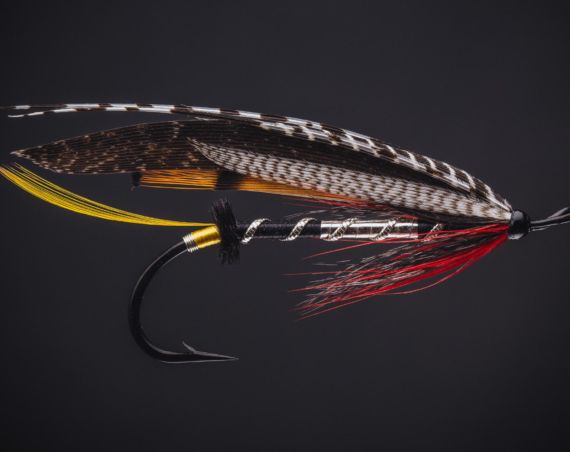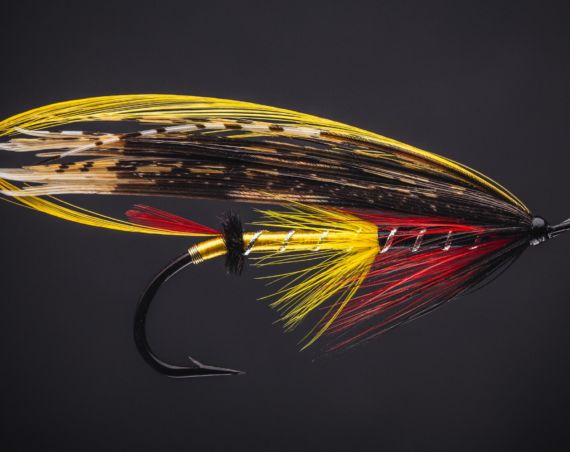Caddis
Probably the most used dry fly in Finland at the moment. It is so popular that it’s usually referred to just with the name Caddis. Basically it’s a parachute variation of the Goddard Caddis developed by John Goddard and Cliff Henry (Originally G&H Sedge). Here in Finland the fly(parachute variation) is usually contributed to Janne Nyblom who introduced it in a magazine article in 2000 and sometimes referred to as Nyblom’s Caddis.
The most important part of this pattern is cutting the deer hair body/wing to the correct shape of a caddis wing. I’ve added photos both from the side and above to give you an idea of the shape that I prefer. The more dense the body the better and longer the fly floats. The original was tied using natural colored deer hair and that works really well but I’ve been using more and more of these dark brown variations that replicate the natural caddis colors a little better. I usually carry a good selection of both colors in sizes 12 and 16 and cover most situations with those. I probably need to add some larger ones as well in size 8 and I’m covered for good.
With a parachute hackle the fly floats a bit lower in the surface and seems to appeal even better to the fish than the regular Goddard Caddis. The parachute hackle is tied around a piece of poly-yarn which is then melted to a short stub that keeps the hackle in place. Some people leave a regular parachute post as an indicator on the fly. Both methods work well. Especially for the darker colors the post is a good idea since they are harder to see in fast water.
Hook: Regular dry fly hook like TMC 100 or Mustad R50
Body/Wing: Spun deer hair cut to the shape of a caddis wing.
Parachute post: Poly-Yarn.
Hackle: Dry fly hackle to suit the pattern.




